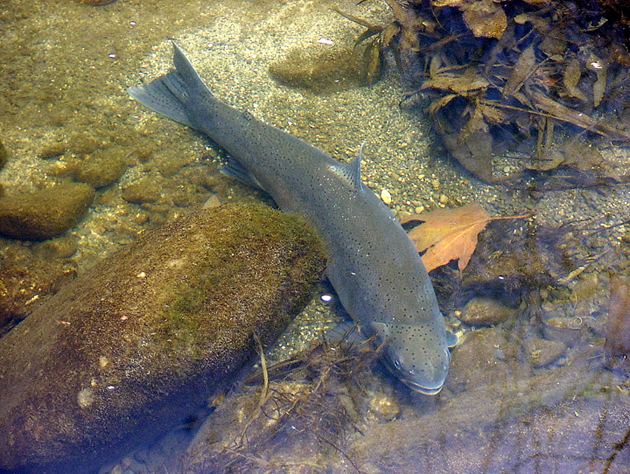
Spring Chinook salmon. Photo credit Michael Humling, USFWS.
Trout Unlimited’s response to National Oceanic and Atmospheric Administration’s (NOAA) new recovery plans for the Snake River Chinook salmon and steelhead has caveats
NOAA / December 2017
Earlier in December, NOAA Fisheries released two final recovery plans for Snake River salmon and steelhead listed under the Endangered Species Act (ESA), charting a path for recovery of three species that historically represented more than half of all Chinook salmon and steelhead returns to the Columbia River system.
The recovery plans for Snake River fall Chinook salmon, spring/summer Chinook salmon and steelhead complete the blueprint for recovery of all ESA-listed salmon and steelhead in the Columbia Basin.
Trout Magazine’s response
by Sam Davidson / Wild Steelheaders United / Trout Magazine
[dropcap]R[/dropcap]ecently NOAA Fisheries, the federal agency responsible for recovering marine and anadromous fish species listed under the Endangered Species Act, released new recovery plans for spring and summer Chinook salmon, and steelhead, in the Snake River.
The Snake is the largest tributary to the Columbia River. Its runs of salmon and steelhead have declined dramatically in recent years, due to a variety of factors.
Trout Unlimited has been working to improve habitat conditions and implement new management approaches to help rebuild Snake River salmon and steelhead populations. TU issued the following statement on the release of the new recovery plans:
The recent release of the final federal recovery plan for Snake River Spring/Summer Chinook salmon and steelhead is a milestone in the decades-long effort to reverse the precipitous decline of salmon and steelhead runs in the Snake River system. The Snake was historically the most productive region in the Columbia Basin for spring/summer chinook and steelhead, producing 40 percent of the Columbia Basin’s spring/summer chinook and 55 percent of its steelhead, and is deservedly a major focus of wild salmon and steelhead recovery efforts.

Steelhead. Photo credit Mark Capelli, NOAA Fisheries.
TU, with many partners, has been working for years to improve habitat in Snake River Basin rivers and streams, and has a strong interest in seeing those efforts succeed in rebuilding wild salmon and steelhead populations.
We commend NOAA Fisheries and the other parties who were involved in the recovery plan’s preparation. The plan provides a good description of the current state of Snake River salmon and steelhead, identifies major threats, and lays out various strategies and actions could contribute to recovery. However, the plan raises as many questions as it answers. It acknowledges that its recommendations are not a prescription for recovery of these species, which support multi-billion dollar commercial and sport fishing economies as well as tribal cultural traditions.
The recovery plan is massive, consisting of thousands of pages. We have not yet had time to digest all of the information it contains, but a few takeaways bear emphasis.
First, it is focused on the goal of rebuilding wild chinook salmon and steelhead to the point at which they no longer require protection of the Endangered Species Act; it is not a plan to rebuild populations to abundant, resilient and fishable levels, which is a higher goal.
Featured Image: Snake River photographed by Ansel Adams.






